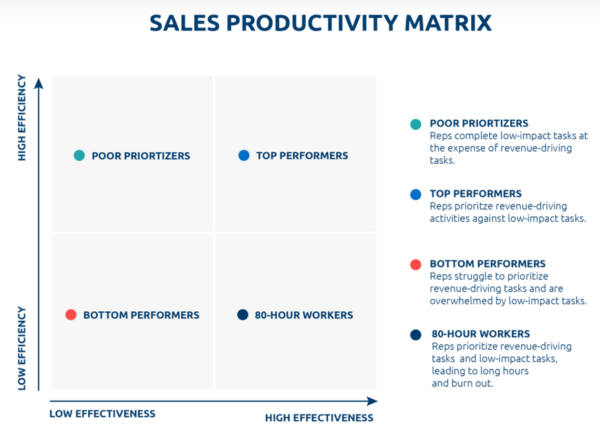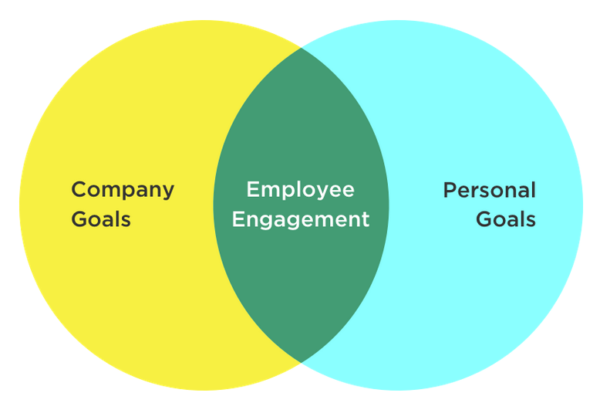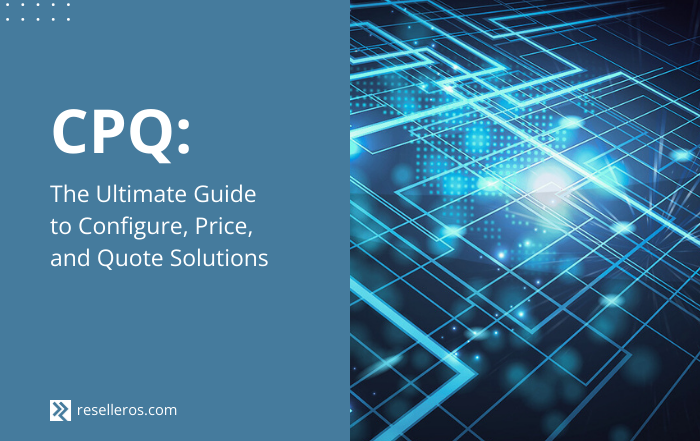The 1-2-3 Guide to Optimizing Sales Rep Productivity
Successful businesses know to re-evaluate all aspects of the company periodically to optimize employee workflow and the customers’ experience. Sale rep productivity deserves particular attention.
A recent survey discovered that less than 25% of sales reps met their quotas last year. What can companies do to optimize sales productivity and drive results?
We’ll highlight three ways, but first, let’s review what we mean by sales rep productivity.
What is Sales Rep Productivity?
Sales rep productivity measures how your sales representative uses your organization’s tools and resources to reach business goals. Ideally, you want maximum outputs, such as acquiring new clients and renewing contracts, with minimum inputs, like spending time, effort, and money.
By measuring sales rep productivity across your entire organization, you can identify high-performers and fine-tune best practices to promote optimum productivity. Furthermore, underperforming reps can benefit from a performance improvement plan.

How Do You Measure Sales Rep Productivity?
There are three sales categories related to sales rep productivity: efficiency, effectiveness, and performance. Sales efficiency measures the practical allocation of sales resources, such as budget, computer software, and time. Sales effectiveness measures how well you utilize those resources to meet your goals. Performance is the overall measure of any sales enhancement effort and typically is the product of efficiency and effectiveness.
Metrics from these categories will clearly show which activities drive the highest revenue.
For each category, choose key performance indicators pertinent to your workflows and business goals. For example:
- Efficiency – KPIs for this category could include creating content, searching for assets, and updating the CRM.
- Effectiveness – Metrics include calls made, proposals sent, and social sales interactions.
- Performance – Analyze win rate, percentage of reps that meet quota, and average deal size.
You can collect productivity data through sales rep surveys, interviews, or the analytics available within customer relationship management (CRM) software.
Three Strategies to Boost Sales Rep Productivity
Now, let’s see the 1-2-3s of sales rep success.
1. Onboarding and Training
Let new sales team members know your expectations from the beginning, especially how to spend and track their time. Train the rep on the company’s sales activity tracker. The tool helps sales reps enter their time and understand where they need to make changes. The newcomer should know how often to use the tracker (e.g., daily, weekly).
Another essential aspect of sales employee training is defining the sales process. Understanding the sales process allows the rep to allocate time, execute, and track the results of each stage.
Lastly, provide the new sales rep with clearly defined goals. Here, sales managers can assist agents in creating goals that contribute to the larger objective of the business. Employees who feel their work adds to the overall success of a company tend to be more engaged and productive.

2. Centralize and Automatically Serve up Content
A frustration for sales is the lack of access to content that marketing creates. And if a rep doesn’t need to spend a lot of time searching for content, they can be more productive.
Content management software (CMS) affords reps a central location where they can access all marketing and sales content. Give the marketers editor rights so they can create and upload to the system. Then, sales reps could receive read rights to view or download the pertinent information.
Companies can also save agents time by organizing content in ways that are intuitive to the rep. For instance, you can set up folders labeled “sales stage,” “industry,” or “persona.”
After you have the content in a central place, you can further maximize the sales rep’s time and give them an edge when selling by leveraging artificial intelligence (AI) and machine learning (ML). How would that work?
AI and machine learning (ML) can quickly analyze the selling trends and patterns that would take a human weeks to figure out. For instance, suppose one of your sales reps is working with the chief buyer of a healthcare facility, who is comparing your product against your competitors. An AI tool could recommend the most helpful content to share based on previous successful deals.
AI-guided selling ensures that sellers connect buyers with the best content every time, promoting an excellent seller-buyer relationship.
3. Obtain High-quality Leads
The saying “quality over quantity” applies to sales as well. To find quality leads, build a customer persona to identify your target audience and learn where they are. Answer the questions when creating the profile:
- In what industry does the prospect work?
- Where is the company situated?
- What is the age and gender of the buyer?
- How does our product or service help the customer?
The persona will assist in narrowing down your lead generation process so your sales rep only searches for leads that will likely convert.
When searching for leads, don’t overlook social media. Sales reps can use social media in every stage of the sales process, and social selling can help sales reps engage more knowledgeably with buyers.
Boost Sales Rep Productivity with Rainmaker
Our experts at Rainmaker work with clients to maximize sales rep productivity by providing the best tools and offering time-tested insights. Using a workshop-driven approach, Rainmaker connects with business leaders and directors to determine the benchmarks of success and the path to get there.
To learn more, visit Rainmaker today.






